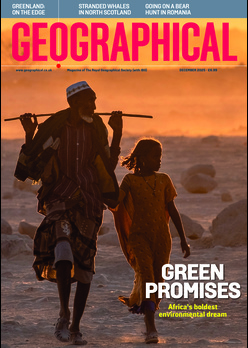
Penguin researcher Pablo Garcia Borboroglu on sustainable wildlife encounters
By
When Pablo Garcia Borboroglu was a young boy, his grandmother told him tales of the penguins that lived on Argentina’s Patagonian coast. She was an early ecotourist, as Borboroglu puts it, making several trips by horse and wagon to see the birds throughout the 1920s and ’30s – a time when seals were still hunted locally for fur and oil.
Her stories sparked an early fascination in young Pablo, who finally visited Patagonia’s penguin colonies many years later. What he found there came as a shock. In the 1980s, 40,000 penguins were dying every year in Argentina due to oil spills. ‘You’d go to the beach and it was normal to see hundreds of penguins that were dying or already dead,’ says Borboroglu. ‘And people normalised it. The politicians ignored it completely.’
Enjoying this article? Check out our related reads:
Borboroglu, who was studying law at the time and had ambitions of becoming an ambassador, began collecting sick penguins from the beaches and transporting them to a small rehabilitation centre that he built.
He started talking to people about what he was seeing, sparking public interest in the crisis and attracting the attention of the media. Eventually, the oil tankers responsible for the pollution were moved further offshore and the shorelines were cleaned.
More than 36 years later – now a penguin researcher and marine conservationist – Borboroglu’s work has helped to protect 130,000 square kilometres of ocean and coastal habitat, and at least 2.5 million penguins. Today, he says, fewer than 20 penguins die from oil spills in Patagonia each year.

Borboroglu’s story is an illustration of how a single trip can transform individuals into powerful ambassadors for nature. While he frequently travels the world to advocate for the protection of penguin colonies, his work at home in Argentina – where he teaches local schools and communities how to better understand and appreciate their seabird neighbours – is just as crucial. It’s for this reason that he believes ecotourism can be conservation’s most powerful ally – as long as it’s well managed.
Currently, there are 296 penguin colonies on the planet that are open to visitors – but that doesn’t mean all 296 colonies are suitable for tourism, says Borboroglu. ‘We can’t rely on people who work in conservation to guide us all the time,’ he says, emphasising the need for greater personal responsibility when deciding to travel anywhere. ‘We have to make sure that the places we visit are well managed, so that we don’t become part of the problem.’
Penguins are great for wildlife watching because – unlike so many other animals – they’re incredibly predictable. Come breeding season, they’re guaranteed to be at their colonies, and many of the 18 species of penguin are very tolerant of humans.
But this is where Borboroglu advises caution. Just because an animal isn’t running away, it doesn’t mean it isn’t being disturbed. Penguins – like many ground-nesting birds – won’t abandon their nests unless they have no choice, but the cumulative effect of many tourists visiting can add up. ‘Make sure that it’s the penguins that are left with a good memory of your visit, not the other way around,’ he says.
Done right, however, travel can be a powerful tool for inspiring change. Borboroglu admits the path from traveller to nature ambassador isn’t easy. He’s faced numerous challenges – none more difficult than a court case he led against a landowner who bulldozed through a penguin colony to build a road.
He endured smear campaigns, corrupt media and intimidation, but with nearly 50,000 species worldwide facing extinction – including 11 penguin species – Borboroglu insists that advocating for nature is the right thing to do.
‘There are about ten million species on Earth,’ he says, ‘and the future depends on just one: us. The biggest lesson I have learned from my career in conservation is that perseverance is power. Never stop believing in our power to protect what we care about,’ he urges, ‘because when we face our foes with courage, together, we can shape the future.




